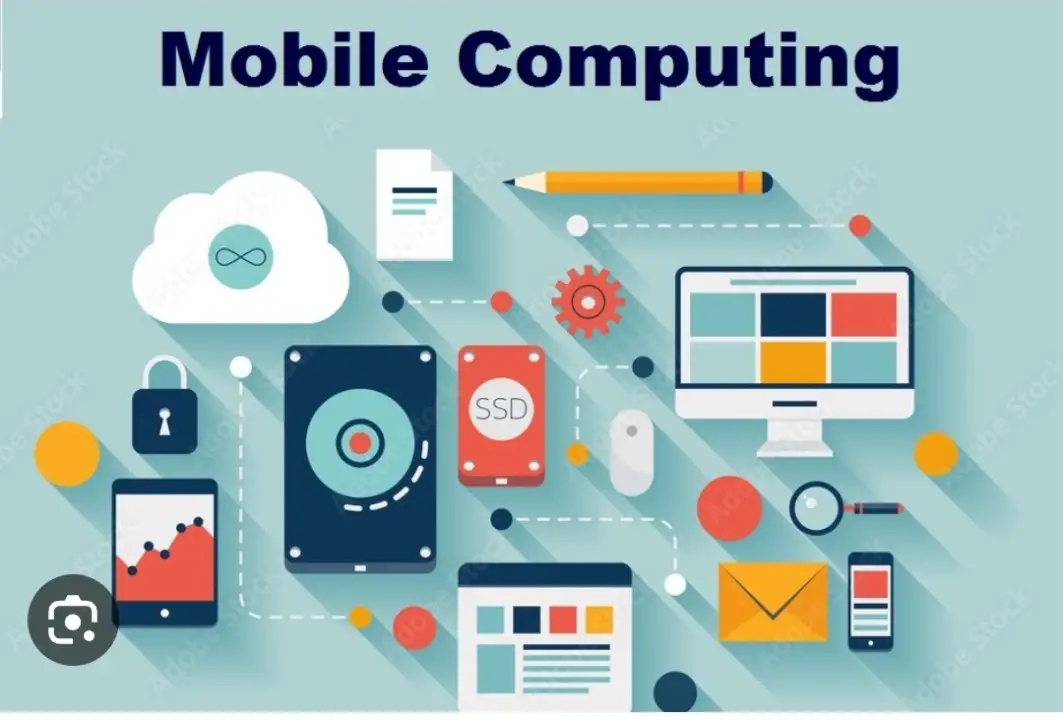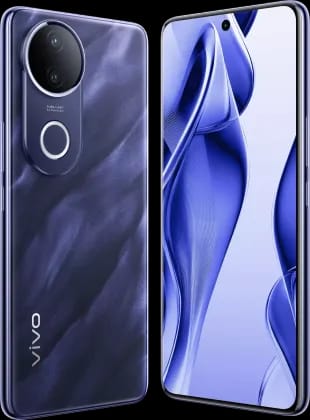You have probably heard the term smart phone when people talk about some fancy gadgets that look like a combination of a cell phone and a personal digital assistant (PDA), and you may have heard the term wireless many times, mostly from advertisements for cell phones and service plans by large wireless service providers. If you are working in the wireless industry or the computer industry, you must be familiar with the notion of mobile computing and have some idea of the concept of pervasive computing. What exactly do these terms refer to? What are the similarities and differences between them? Also, what are the cutting-edge technologies and emerging applications of the next generation of mobile computing? What are some of the challenging issues in this domain? Before we embark on an exciting journey into the wonderful world of mobile computing, we must answer these questions.
Smart Phones and Mobile Computing
The next generation of mobile computing will lead to the convergence of communications, computing, and consumer electronics, three traditionally separate industries with significantly fewer differences. At the front end, a smart phone is likely to become a universal mobile terminal, carrying integrated functionality augmented by mobility and ubiquitous network access.
Definitions
First of all, what is a smart phone? What are the differences between a smart phone and a cell phone? What are the implications of mobile computing? How is mobile computing related to wireless communications? People hear these terms, but very often they are being used quite ambiguously by the media. A significant amount of literature from both academia and industry discusses research and development topics about smart phones and mobile computing, but some of these articles have confused important terms in this domain, particularly mobile and wireless. In many cases, these two terms are considered the same and used interchangeably; however, they are not the same.
Mobile Computing
Mobile computing refers to a broad set of computing operations that allow a user to access information from portable devices such as laptop computers, PDAs, cell phones, handheld computers, music players, portable game devices, and so on. The two operational modes in mobile computing are disconnected mode and connected mode. In disconnected mode, information access is local to the mobile device, such as when someone uses a PDA to manage a schedule and address book. In connected mode, the mobile device supplies one or more types of wireless or wired network connectivity to enable network access. In disconnected mode, a user can synchronize data on the mobile device with a computer. Synchronization may involve both downloads and uploads to the host computer.
In connected mode, applications on the mobile device are able to communicate directly with other mobile devices or back-end systems through a network connection. As mobile wireless technologies mature and provide higher data rates at lower costs, we will be able to take advantage of a new range of mobile devices that allow network mode operation, meeting the need for ubiquitous mobile access anytime, anywhere.
In wired mobile computing, network access from a mobile device is enabled through a wired network. For example, people bring their laptop computers to conferences, offices, and hotels and then connect to a wired network such as an Internet connection (LAN), or they connect to the Internet via asymmetric digital subscriber line (ADSL), cable modem, or dialup. Wireless mobile computing (or mobile wireless computing) emerged and proliferated at a staggering pace as a result of the dramatic advancement of an assortment of wireless technologies including cellular wireless networks, wireless LANs, Bluetooth, infrared, and wireless sensor networks. These wireless technologies essentially make it possible for the user to enjoy such mobility that the location of the mobile device user no longer needs to be fixed to maintain a network connection. The advantage is clear: tasks that would have to be performed on a computer at a fixed location can now be performed on the move.
The flexibility offered by mobile computing and its natural integration with heterogeneous network access have given rise to a large number of novel business and consumer applications and services utilizing voice, messaging, and data communications. Looking a few years down the road, as wireless data technologies continue to evolve, mobile network operators and service providers have begun to leverage powerful, wireless-enabled, always-on mobile devices and high-bandwidth, ubiquitous network access to provide a new spectrum of applications and services to deliver information and support to anyone who needs it.
The notion of nomadic computing refers to a special case of mobile computing—the use of a mobile device to connect to a wired or wireless network intermittently while traveling from place to place with support for
high-level mobility. A typical application of nomadic computing is traveling salespeople and technical professionals who connect to a corporate network from offices, homes, customer sites, hotels, airports, and so on, being able to consume the same set of services provided by the network conveniently and conveniently regardless of location. Nomadic computing does not always require an active network connection.
Wireless Communication
As the term wireless implies, there are no wires attached to devices in the wireless domain; instead, various radio transmission technologies are used to connect two devices or a device and a shared infrastructure. A number of wireless technologies have been used by mobile computing to enhance the user experience with respect to both user mobility and device mobility. Wireless does not necessarily mean mobile, however, because some wireless technologies, particularly cable-replacement wireless technologies, can only be used when one or both parties are fixed or hardly move during wireless signal transmission, such as short-range Bluetooth or infrared and long-range WiMAX.
In short, some mobile applications do not require wireless technologies, but some wireless applications are not mobile. Clearly, wireless communication emphasizes the radio layer and the link layer of the network protocol stack (e.g., how a signal is transmitted and received), while mobile computing takes advantage of ubiquitous wireless communication to build applications and services. In fact, the notion of wireless has typically been used (or abused?) to refer to cellular services provided by major wireless service providers such as Cingular Wireless, T-Mobile or Sprint.
Smart Phone
The term smart phone was initially coined by unknown marketing strategists to refer to a then-new class of cell phones that can facilitate data access and processing with significant computing power. In addition to traditional voice communication and messaging functionality, a smart phone typically offers personal information management (PIM) applications and some wireless communication capability. Broadly speaking, a smart phone is like a small, networked computer in cell phone form. The first generation of cell phones, despite their large size, could barely offer anything other than making phone calls. Later, due to amazing advances in semiconductor technology, cell phones were typically equipped with far more powerful processors, larger storage and a liquid-crystal display (LCD) screen, which made it possible to perform some computing functions locally.
Common cell phone applications, collectively referred to as PIM applications, include calendar, address book, organizer, and calculator functions. Data networking capabilities are usually very limited on these cell phones. In essence, this generation of cell phones can be considered a combination of voice-centric cell phones and PDAs.
As the need for mobile data access on cell phones became apparent, the next generation of cell phones – the smart phone – emerged. A smart phone typically supports one or more short-range types of wireless technologies such as Bluetooth and infrared, making it possible to transfer data through these wireless connections in addition to cellular data connections. It is the smart phone that can provide the mobility, ubiquitous data access, and comprehensive intelligence of a computer for almost every aspect of business processes and people’s daily lives.
In addition to traditional cell phone PIM applications, other typical smart phone applications include simple games, built-in cameras, audio/video playback and recording, instant messaging, e-mail, and wireless Internet. In addition, smart phones can be used as mobile terminals for e-commerce, enterprise applications, and value-added, location-going services. In a word, the smart phone is the future of today’s cell phone, as it offers dramatically increased wireless capability, computing power, and on-board storage.
The terms cell phone and mobile phone interchangeably when referring to a voice-centric cellular wireless device. Today, the general public perceives smart phones as high-end, multifunctional, business-centric cell phones with high-resolution color displays and fast mobile processors that are unaffordable to ordinary consumers because of the cost of the phone device (hundreds of dollars) and wireless data services ($30 to $60 per month). Like many other popular computing devices, however, smart phones will surely follow the same track and will sometime be embraced by the mass market as a result of rising hardware and service prices and emerging killer applications.
The vision of “anytime, anywhere, from any device,” for mobile computing naturally leads to the issue of creating a universal mobile platform for reliable and high-performance computing with heterogeneous, seamless wireless access through limited computing resources. Smart phones are generally considered as one of the promising candidates for such purposes.
Read Also:
- Discussion About Health Risks Due To Mobile Phone Use
- Health Risks Due To Mobile Phone Use
- Mobile Phones Risks On Health
- UPI Will Not Work On Inactive Mobile Numbers From April 1: NPCI’s Decision To Prevent Cyber Fraud, Pull Transaction Feature Will Also Be Closed
- Something About Google Mobile Phones
- Best Mobiles Under ₹30,000 In March 2025: OnePlus 12R, iQOO Neo 10R, POCO X7 Pro And More
- Mobile Operating Systems
- Effect Of Mobile Phone Use On Some Health Aspects Of Children And Adolescents
- The Collapse Of Nokia Company Mobile Phones
- Artificial Intelligence In Mobiles
- Best Mobile Phones Under Rs 15,000 In 2025: POCO M7 PRO 5G, CMF Phone 1 And More
- Introduction To Mobile Technology








Leave a Reply